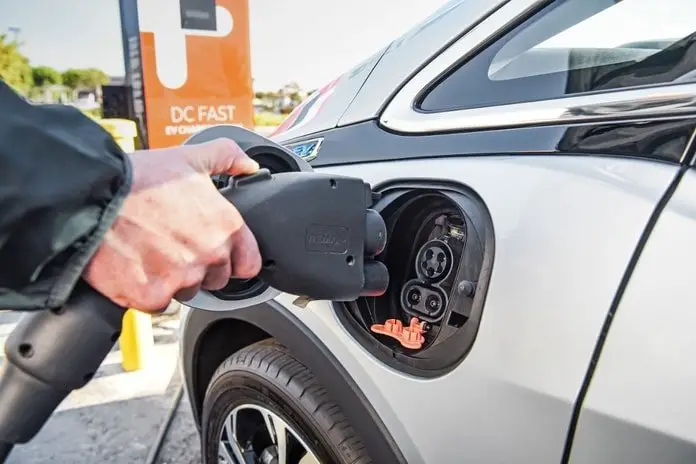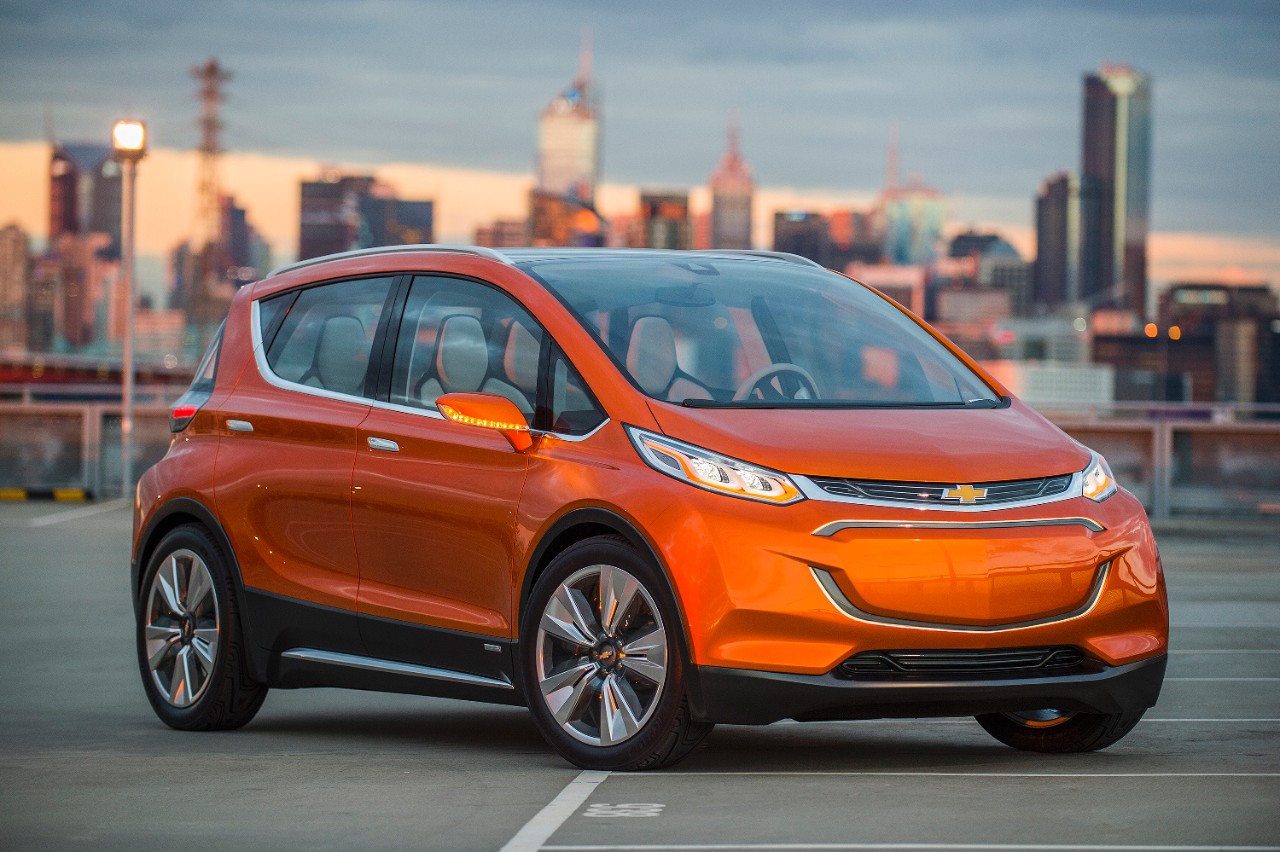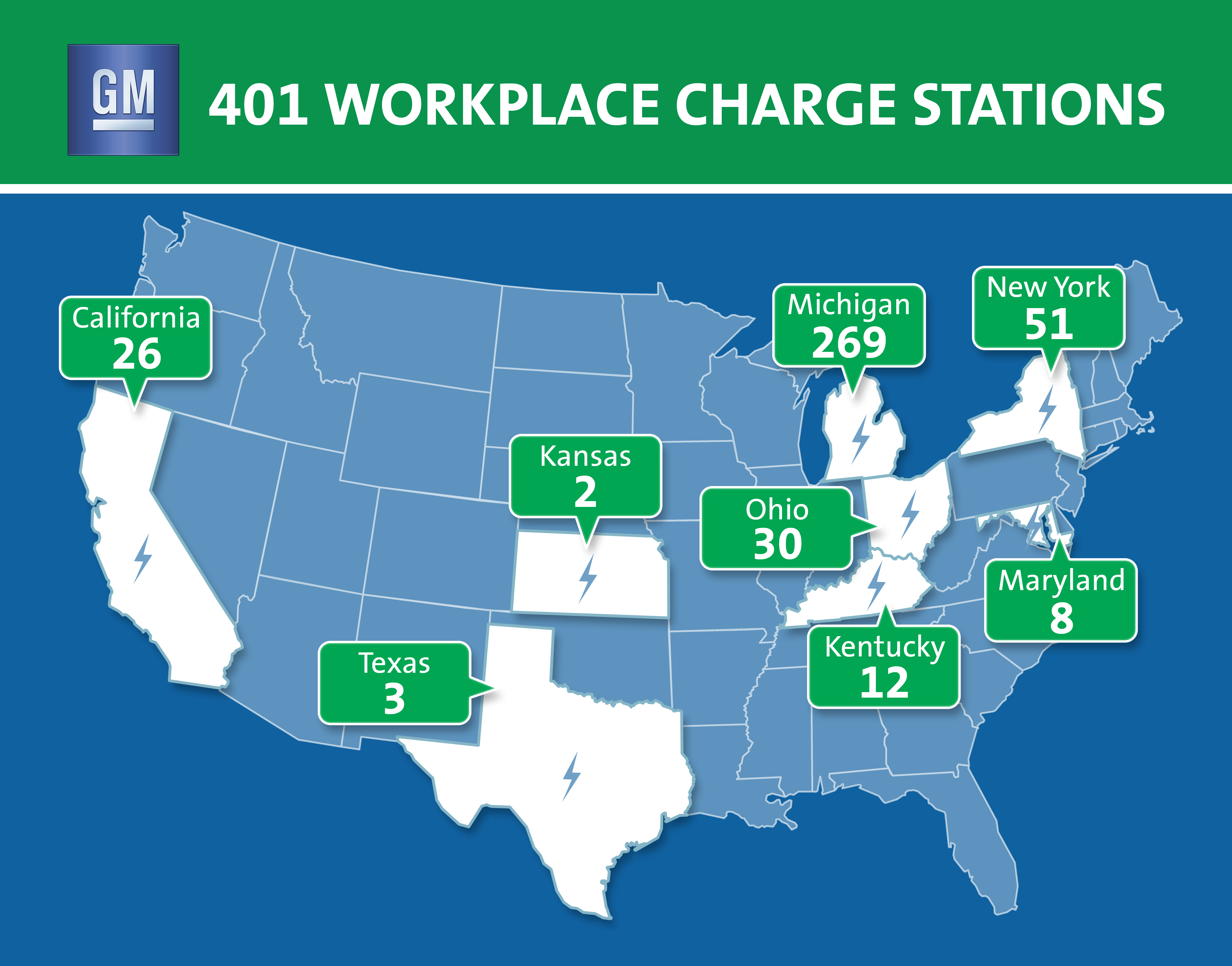Search the Community
Showing results for tags 'EV'.
-
- 3 replies
-
- 1
-

-
- GM first Modern EV was Corvair
- EV
-
(and 2 more)
Tagged with:
-
John Goreham Contributing Writer, GM-Trucks.com 10-24-2017 During a recent motor press event hosted by the Monticello Motor Club in New York State, GM had the 2017 Bolt on hand for test drives. There were cars like Cadillac ATS-Vs, Dodge SRT Wide Body Hellcat Challengers, and other hi-po vehicles on hand as well, so cars like the Bolt were going mostly untested by the press during the two-day event. We took it out, and it was the biggest surprise of the trip for GM-Trucks.com. As you probably know, the Bolt is the first long-range electric vehicle in America that can reasonably be considered “mainstream.” Though it is a compact car with an MSPR of $43,015, Bolts don’t cost owners anywhere near that amount. In Massachusetts, where this writer resides, new Bolt Premiers are selling for $26,280 after state and federal incentives and dealer discounts. Leases for the fully-loaded Bolt are just $231 per month and the state rebate matches the initial payment. The Bolt is also available from stock all around the Northeast, unlike the Tesla Model S which is only available in California and won’t be in stock for as long as two years from now. The Drive The Bolt drives much better than one might expect from a compact vehicle with a high driving position. It feels fun in everyday driving. During our test drive, there was an unusual intersection where we could go from a stop to the legal 55 MPH speed limit. The Bolt would chirp the tires and run to that speed at a fast pace we did not expect. The Bolt moves out in a hurry and feels quick. It also has plenty of torque and power to pass in any situation. Floor the Bolt at 60 MPH and it instantly leaps ahead. In turns it is enjoyable and body-lean is much less than expected. We suspect the battery position gives the Bolt a much lower center of gravity than it appears to have. Over bumps, the Bolt is composed and comfortable. Bolt Content Everything one wants is here. Leather heated seats, a massive 10.2” infotainment screen, as is the norm for most EVs, and Android Auto and Apple Car Play compatibility. Our Bolt tester had the optional DC fast charger capability, wireless device charging, an upgraded Bose audio system, and rear USB ports. Bolt Safety The Bolt is an IIHS Top Safety Pick, and is rated higher than the Tesla Model S for safety byhttp://www.iihs.org/iihs/ratings/vehicle/v/chevrolet/bolt-4-door-hatchback IIHS. Bolt Warranties & Similar The Bolt has an unusual warranty being an EV. It starts out with a 3-year, 36K bumper to bumper warranty and 5-year, 60K drivetrain warranty. On top of that, GM adds an 8-year, 100K warranty on the EV drivetrain system. GM also throws in the first two scheduled maintenance visits. Roadside assistance and courtesy transportation are also part of the package. Bolt EV Conclusion GM’s Bolt is a vehicle that leaps ahead of EVs like the more expensive BMW i3. The Bolt’s 238-mile EV range make it the longest-range mainstream battery-ony EV one can go and out and purchase today. More importantly, the Bolt has a feeling of quality and solidity that would surprise any owner of any previous compact GM car. The Bolt is the top-selling affordable battery-electric car in America currently and is the number three-selling affordable EV of any type after the Volt and Toyota Prius Prime. It is outselling the BMW i3 by about four to one and its sales are about 40% higher than the Nissan Leaf’s. This is no accident. Chevy has put together a very desirable EV package and made it accessible to almost all buyers interested in a new electric vehicle with decent range.
-
Chevrolet also confirmed that the Bolt will be developed with two goals in mind. A 200-mile all-electric range and a $30,000 price tag. While the production vehicle will share the concept's name, don't expect them to look exactly the same. The production version will most likely undergo some styling and functional changes before it goes on sale. The Bolt will be produced Michigan at the Orion Assembly facility. The company simultaneously announced a $200-million investment to get ready for Bolt production. Orion will receive $160-million for tooling and equipment while Pontiac Metal Center Facilities will receive $40-million for new dies. The Bolt will be produced at the same facility that currently produces the Buick Verano and Chevrolet Spark Chevrolet has not yet announced a model year or on sale target for the Bolt. General Motors Says Leveraging the industry-leading battery technology found in the Chevrolet Volt and Spark EV, the Bolt EV concept was developed as a game-changing, long-range pure electric for all 50 states, designed to offer more than a GM-estimated 200 miles of range at a target price of around $30,000.
-
The Bolt EV Concept champions the following: 200-mile electric range Proposed $30,000 price tag Designed to be 50-state legal Selectable operating modes designed around driving styles such as commuting and cruising Supports DC fast charging Sleek exterior style with virtually no front or rear overhang Lightweight materials, including aluminum, magnesium, carbon fiber, and woven mesh keep curb weight down LED headlamps and tail lamps Uses a new "Bolt EV App" A smartphone can be used as a key Allows ride-sharing management, including reservations, vehicle location, digital key, and even payment processing Incorporates automatic park and retrieval technology, which can summon the Bolt to the owner's location from a parking spot. "The Bolt EV concept is a game-changing electric vehicle designed for attainability, not exclusivity," said General Motors CEO Mary Barra. "Chevrolet believes electrification is a pillar of future transportation and needs to be affordable for a wider segment of customers."
- 10 comments
-
Here's the full GM Press Release GM Surpasses 400 EV Charge Stations at U.S. Facilities Automaker has nearly 160 stations located at various manufacturing facilities 2014-05-20 INDIANAPOLIS – Based on growing employee demand, General Motors today announced that it has installed 401 electric vehicle charging stations at its U.S. production and business facilities. More than 20 percent of the stations use electricity generated from solar canopies to help charge employee vehicles. The majority of the stations are located at GM’s large engineering and corporate facilities in Michigan, where employee EV ownership is growing steadily. All charge stations are available free of charge to GM employees and visitors. “GM’s commitment to installing a workplace charging infrastructure is among the most expansive of any corporation in the U.S.,” said Britta Gross, director of GM advanced vehicle commercialization policy. “Workplace charging is one of the most important things a company can do to raise plug-in electric vehicle awareness and energize employees. “Once employees see how easy it is to plug in at home and work, and they realize the fuel savings, plug-in electric vehicles like the Chevy Volt begin to sell themselves.” In addition to the workplace charging, GM has another 400 charge spots dedicated exclusively to vehicle development and testing. Chevrolet and Cadillac dealers have installed approximately 5,900 charge stations at their locations for owner use – 17 of these dealerships use solar charging canopies. ”Workplace charging is now part of GM’s corporate sustainability plan and our employees want to be part of this positive change,” Gross said. “The key for any company is to take the first step and make it simple for employees to engage - in our case we started with outlets and free charging.” GM’s charging count follows the U.S. Department of Energy’s announcement that 75 businesses have committed to participate in its Workplace Charging Challenge to install charging stations for their employees. The Workplace Charging Challenge, of which GM is a founding member, seeks to persuade America’s employers to commit to provide electric vehicle charging access to employees through partnership, advocacy and promotion. “GM is an example of a partner who not only has more than 400 workplace charging stations deployed, but also is actively out recruiting other employer partners for the Challenge,” said Reuben Sarkar, deputy assistant secretary for transportation, U.S. Department of Energy, told attendees at the annual Electric Drive Transportation Association conference here.
-
- gm
- general motors
-
(and 3 more)
Tagged with:
-
General Motors has announced a milestone in the company's efforts to build out a nation-wide electric vehicle charging station system. The company has now installed 401-charging stations across the United States, with 20% of them powered by solar electricity. A majority of the stations, 269, are in Michigan and located in or near GM facilities. Here's the full GM Press Release GM Surpasses 400 EV Charge Stations at U.S. Facilities Automaker has nearly 160 stations located at various manufacturing facilities 2014-05-20 INDIANAPOLIS – Based on growing employee demand, General Motors today announced that it has installed 401 electric vehicle charging stations at its U.S. production and business facilities. More than 20 percent of the stations use electricity generated from solar canopies to help charge employee vehicles. The majority of the stations are located at GM’s large engineering and corporate facilities in Michigan, where employee EV ownership is growing steadily. All charge stations are available free of charge to GM employees and visitors. “GM’s commitment to installing a workplace charging infrastructure is among the most expansive of any corporation in the U.S.,” said Britta Gross, director of GM advanced vehicle commercialization policy. “Workplace charging is one of the most important things a company can do to raise plug-in electric vehicle awareness and energize employees. “Once employees see how easy it is to plug in at home and work, and they realize the fuel savings, plug-in electric vehicles like the Chevy Volt begin to sell themselves.” In addition to the workplace charging, GM has another 400 charge spots dedicated exclusively to vehicle development and testing. Chevrolet and Cadillac dealers have installed approximately 5,900 charge stations at their locations for owner use – 17 of these dealerships use solar charging canopies. ”Workplace charging is now part of GM’s corporate sustainability plan and our employees want to be part of this positive change,” Gross said. “The key for any company is to take the first step and make it simple for employees to engage - in our case we started with outlets and free charging.” GM’s charging count follows the U.S. Department of Energy’s announcement that 75 businesses have committed to participate in its Workplace Charging Challenge to install charging stations for their employees. The Workplace Charging Challenge, of which GM is a founding member, seeks to persuade America’s employers to commit to provide electric vehicle charging access to employees through partnership, advocacy and promotion. “GM is an example of a partner who not only has more than 400 workplace charging stations deployed, but also is actively out recruiting other employer partners for the Challenge,” said Reuben Sarkar, deputy assistant secretary for transportation, U.S. Department of Energy, told attendees at the annual Electric Drive Transportation Association conference here. Attached Images: Click here to view the article
-
- gm
- general motors
-
(and 3 more)
Tagged with:


















